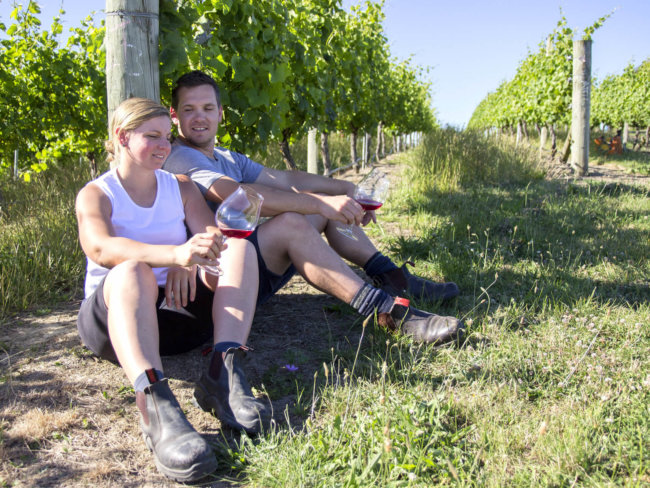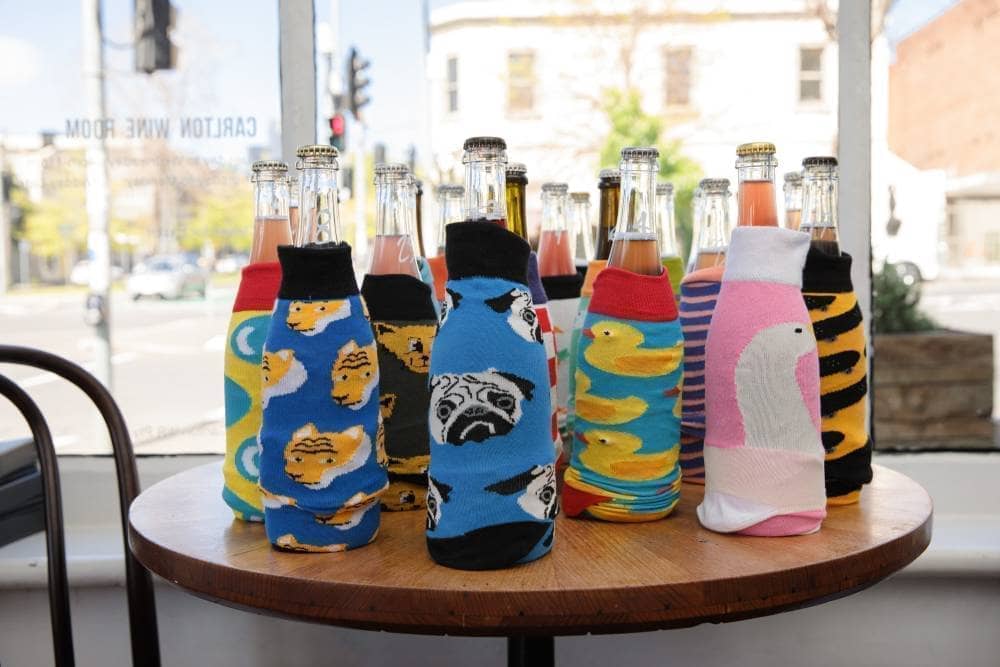Damon and Jono Koerner are the second generation to run the family’s Clare Valley vineyard. And they have taken it from an exclusively contract operation to the primary fruit source of one of the most exciting young labels on the market: Koerner Wine. That fruit resource stretches back before Jono and Damon’s parents took possession some 40 years ago, with Riesling not long in the ground then, and Grenache already significantly mature. The brothers reserve these parcels for their wines, with more youthful plantings of vermentino also making the grade. The offer is bolstered by the neighbouring Vivian Vineyard, including the Corsican/Tuscan variety sciacarello, as well as sangiovese. Koerner Wine’s focus is on fruit quality, with early picking and transparent winemaking the driving forces – approachability, texture and drinkability are key to their style. The Koerners were named the 2019 Young Gun of Wine.
The brothers Koerner certainly had a bit of an advantage over some of their contemporaries when they founded their ‘Koerner Wine’ label, with an enviable resource of fruit at their fingertips thanks to their parents, Christine and Anthony. The Koerners have farmed their substantial Gullyview Vineyard in Watervale, Clare Valley, for nearly 40 years. Today, Damon and his brother Jonathan tend to the vineyard, with Damon making the first wines under their eponymous label in 2014.
The Gullyview vineyard is planted to terra rossa soils – red cay over limestone – with Riesling the principal variety. The oldest plantings are of Grenache, though most of the site was planted in the 1980s, with some also in the 1970s. Vermentino arrived a little later again, and the brothers source some of the rare mammolo (or sciacarello, if you prefer) from the neighbouring Vivian Vineyard, in Leasingham. Only 5% of the home-vineyard fruit is used by Koerner, from the 90-year-old grenache and 45-year-old riesling vines.
“Jono and I have always said our aim is to produce good honest wines that are true to the vineyard, varietals and us as the producer,” Damon says. “I love textures in white wine – sometimes textures can mask other components of the wine so I’m exploring how to fine tune these, so they complement the wine, through working with different vessels, time on lees, when to add sulphur etc. etc.”
That follows for the reds, with the fruit picked early to retain vibrant fruit freshness and crunchy structures. The making is as hands-off as possible, but using ceramic eggs, concrete tanks and oval foudres, alongside more typical neutral oak barrels, with an emphasis placed on building texture and early interest in the wines. The only addition that is made to the wines is as little sulphur as is necessary.
Synonyms are somewhat the order of the day under the Koerner Wine labels, with vermentino referred to as such, and also by the Ligurian variant pigato and the French tag, rolle. Sciacarello and mammolo, Corsican and Tuscan synonyms, as with nielluccio and sangiovese (though the link between these two is disputed), get a run on the same label, and grenache takes on a Sardinian accent as cannonau. This could all read as a bit of smoke and mirrors, but not in the hands of Koerner Wine, with the suggestions all just playing out as subtle indicators that these are wines of thoughtful difference, built with food and accessibility in mind.
In 2019, the Young Gun of Wine was awarded to the Koerners. The winemaking duo were lauded for the ‘La Corse’, a red blend that includes sciacarello, which YGOW founder Rory Kent summed up as, “A light, bright, easy-drinking red, with layers of interest in the glass…”
They’ve become an emerging force and beacon for future creativity in the Clare Valley, a region perhaps somewhat isolated and traditional. What they’re doing, and how they’re doing it, make them a poster child for new wine labels today.





